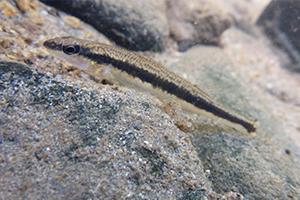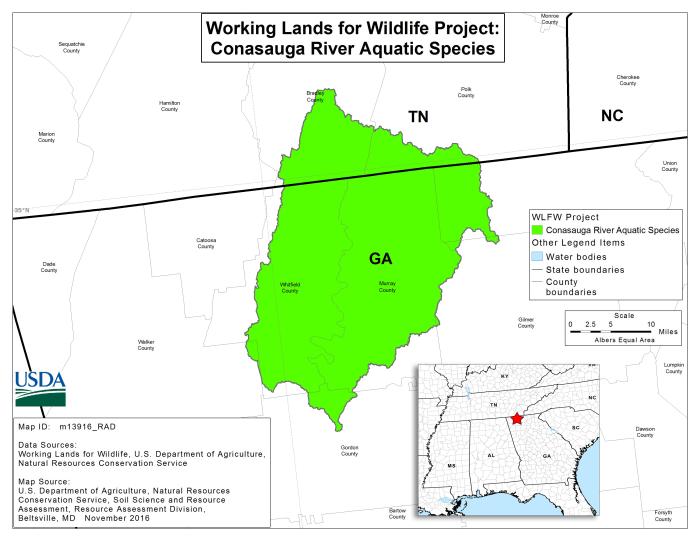Conasauga River Aquatic Species
The Conasauga River in southern Tennessee and northern Georgia is known for its exceptional mussel, snail, crayfish and fish biodiversity.

The Conasauga River teems with biodiversity. The river in southern Tennessee and northern Georgia is known for its exceptional mussel, snail, crayfish and fish biodiversity. This river system supports 10 fish and mussel species that are federally listed as endangered or threatened and 20 other aquatic species that are either listed by the states or at-risk of federal listing. The holiday, bridled, and trispot darters are among those fish facing declines and at risk of being listed. Many of these species are imperiled because of sediment, nutrient and pesticide pollution. NRCS is working with private landowners in the Conasauga River watershed in both states to improve water quality to support the species’ recovery.
Landowners in Conasauga River watershed are helping the holiday, bridled and trispot darters as well as the river’s other aquatic species by implementing conservation practices that reduce nutrient inputs on Conasauga landscapes and prevent sediment, nutrients and pesticides from washing off the land.

NRCS offers technical and financial assistance to help landowners improve water quality. This assistance helps producers plan and implement a variety of conservation activities, or practices, that benefit aquatic species.
Technical assistance is free to producers. The agency’s staff of experts and conservation partners work side-by-side with producers to develop a conservation plan. Each plan focuses on improving the health of waterways downstream and is tailored to the landowner’s property. These plans provide a roadmap for how to use a system of conservation practices to meet natural resource and production goals.
Financial assistance helps producers pay for the adoption of conservation systems that improve water quality. Many conservation practices are available to help landowners reduce nutrient inputs and prevent sediment, nutrients and pesticides from washing off the land, including cover crops, residue and tillage management, fencing, watering facility, nutrient management, prescribed grazing and stream habit improvement.
The Conasauga River Aquatic Species Project is part of the Working Lands for Wildlife (WLFW) partnership, a collaborative approach to conserve habitat on working lands. WLFW provides technical and financial assistance through the Environmental Quality Incentives Program and Agricultural Conservation Easement Program, conservation programs of the Farm Bill, the largest funding source for conservation on private lands.


